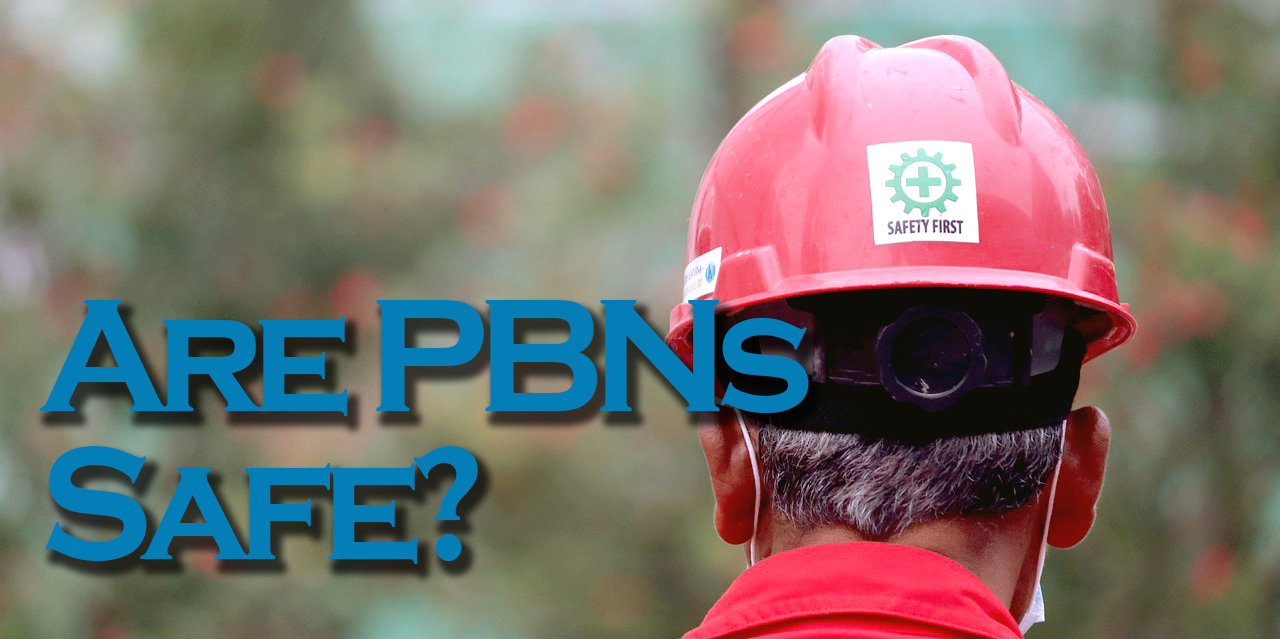Private Blog Networks (PBNs) offer significant rewards for those willing to take on higher risks. While every SEO webmaster must acknowledge this reality, is there a way to minimize these risks? Let’s explore.
Is PBN SEO Safe?
Many webmaster guidelines often see Private Blog Networks as a black hat SEO strategy.
However, since everyone wants to rank higher on search engines, SEO experts find ways to work around the rules by using grey areas in search engine policies.
If a website gets caught using black hat SEO, it can face serious penalties, like being removed from search results or even blacklisted. These risks can be costly.
Search engine rules change often, sometimes every year. A method that was banned in 2018 might have become acceptable in 2019, and what worked in 2021 may not be allowed in 2022.
Understanding how search engine algorithms work is important for using PBN anchor texts in link-building safely. This helps SEO professionals take advantage of opportunities while avoiding penalties.
Do PBNs Still work in 2025
Before Private Blog Networks existed, the early internet was filled with link farms, websites that used pay-per-click tactics to manipulate search rankings.
Back in the mid-2000s, webmasters relied on link farm networks to boost rankings based on the search engine rules of that time. These sites were live, indexed, and openly linked to their domains to keep their brands at the top of search results.
However, the problem was that these link-building networks often contained low-quality content, either plagiarized, spun, or completely useless.
As search engine users grew, the demand for high-quality, relevant content increased. Search engines responded by introducing webmaster guidelines, eventually declaring link farms illegal and delisting sites that used them.
Over time, search engines refined their algorithms to prioritize reliable and valuable content. But just as webmaster guidelines evolved, so did SEO experts, who continuously found workarounds.
By the 2010s, when link farms were banned, SEO professionals developed PBN link-building as an alternative. These networks mimicked link farms but were structured to align with the legal SEO practices of the time.
However, Google, which dominates the search market, officially declared PBN backlinks illegal in 2014. This was a major blow to webmasters who had been using PBN strategies to manipulate rankings.
But why did these sites face heavy penalties? Let’s take a closer look.
Ranking Risk Factors
Search engines like Google, Bing, and Yahoo use advanced algorithms to rank websites for every search query. For most SEO professionals, Google’s PageRank algorithm, named after its co-founder Larry Page, is the primary factor to consider.
This algorithm calculates ranking scores based on multiple variables, including:
Word Count & Content Relevance
Early search engine algorithms assumed that longer blog posts were more relevant. As a result, link farms often publish keyword-stuffed content with high word counts but little value. Today, search engine bots are smarter, they analyze content quality rather than just length. Research by Ahrefs, which studied 900 million pages, found that 2,000-word blog posts tend to generate more organic traffic than excessively long 10,000-word posts.
SEO experts now focus on content readability, structure, and intent, rather than just word count.
Keywords & Search Intent
Search engines process user queries as keywords and analyze web pages to find the most relevant results. Modern algorithms use Latent Semantic Analysis (LSA) to check if a page’s keyword usage aligns with the overall content. Keyword placement and variation (such as PBN backlinks, PBN link-building, and Private Blog Network links) help avoid keyword stuffing while maintaining relevance.
Anchor Text & Internal Linking
Anchor texts act as connection points between web pages. Search engines examine how hyperlinks are placed within content to determine link-building quality and user intent. Proper use of anchor texts helps establish a natural backlink profile and improves rankings.
Backlinks & Link Authority
Backlinks are one of the most critical ranking factors. These are links from external domains pointing to your website. High-quality backlink sources—such as guest posts, affiliate blogs, news sites, and .edu domains—can significantly boost rankings.
However, toxic backlinks from low-quality PBNs or spammy sites can harm your website, leading to penalties or deindexing. Ensuring high domain authority (DA) backlinks is essential for sustainable SEO success.
Technical SEO & Website Development
Search engines also evaluate technical SEO factors such as:
- Web hosting & domain setup
- Page load speed & mobile-friendliness
- Meta tags, structured data & image optimization
- User Interface (UI) & User Experience (UX)
- Security (SSL, HTTPS, etc.)
When building a PBN network, factors like choosing aged domains, selecting hosting locations, page design, and plugin usage play a role in how effective and undetectable the network remains. By analyzing these factors, Google and other search engines determine which websites are authoritative, relevant, or manipulative, making PBN SEO a strategy that requires careful execution to avoid risks.
Are Private Blog Networks(PBNs) Safe?
The honest answer is No. This is why understanding the risk factors is essential, it helps you make informed decisions when planning and executing your SEO-PBN links strategy.
The risks are high because the rewards can be significant. However, if you understand these risks and know how to manage them, you can save time, money, and effort while minimizing potential penalties.
Avoiding PBN Risks
You’re likely reading this because you’re planning to build a Private Blog Network (PBN) or have received an offer to use one. Either way, understanding the risks is crucial.
The first step to minimizing PBN risks is recognizing them and knowing how to avoid them effectively.
Here are some key risks involved in setting up and launching a PBN, along with strategies to mitigate them.
Purchase Quality Old Domains
Private Blog Networks (PBNs) rely on expired domains to retain their authority, but failing to check their history can be a major risk.
Avoid purchasing domains with high backlink metrics but low domain authority, as these may be flagged as suspicious. A domain with a questionable history can jeopardize your entire PBN link-building strategy.
Diversify Hosting
Since PBN backlink strategies involve multiple domains, search engines consider it manipulative if these domains are visibly interlinked.
In the past, link farms followed this pattern to manipulate search rankings. To prevent detection, host your private blog network websites on different servers, ideally distributed across various locations. This diversification helps reduce footprints and enhances your PBN’s longevity.
Unique UI/UX
Search engine bots analyze website similarities, and identical designs across multiple sites can raise red flags. To minimize this risk, use different themes, layouts, and plugins for each PBN website. Be cautious with third-party WordPress plugins, as they may create footprints if overused across multiple domains.
Content is King
Search engines assess PBNs based on content quality. Thin, duplicate, or keyword-stuffed content can lead to penalties.
To avoid this, conduct thorough keyword research, implement latent semantic indexing (LSI), and focus on natural, engaging content. Avoid spammy or plagiarized material, as it can severely impact your PBN link-building efforts.
Is Google Getting Better at Detecting PBNs?
Yes—exponentially.
- Semantic Link Context: Google now understands the meaning around anchor text using NLP.
- Cross-Site Patterns: Similar themes, IPs, or DNS records can get linked together.
- Link Graph Mapping: Detects sites sending links to the same targets repeatedly
- Behavioral Data: If users quickly bounce from PBN pages, those links are devalued
Despite this, Google still struggles with small, private networks that mimic genuine content sites.
Final Thoughts: Is PBN SEO Safe in 2025?
PBNs aren’t dead—they’ve simply evolved. The days of $5 expired domains and spun content are gone. What works in 2025 is a private, clean, and sophisticated setup that mimics editorial blogs.
If you treat your PBN like a real brand, it will treat your rankings with real power.
But the lazy, shortcut-driven approach will not just fail—it’ll get you penalized.
Use PBNs wisely. Hide them well. And always diversify your strategy.

